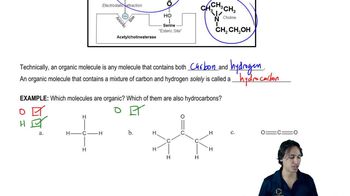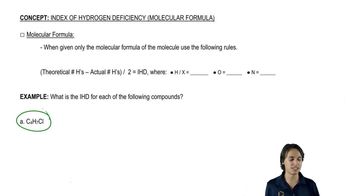Draw a condensed structure for each of the following:
a. 2-hexyne
b. 5-ethyl-3-octyne
 Verified step by step guidance
Verified step by step guidance Verified video answer for a similar problem:
Verified video answer for a similar problem:



 1:55m
1:55mMaster How to name alkenes and alkynes with a bite sized video explanation from Johnny
Start learning